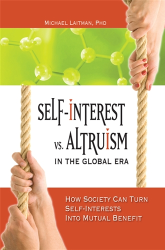The Middle Ages through the Prism of Kabbalah
The Middle Ages is a very peculiar period in history. views on when it began and when it ended seem to range from 2nd-5th century to 15th-18th century respectively, depending on the researcher’s field of expertise. Some mark the fall of the Western Roman Empire as its beginning and the fall of the Eastern Roman Empire as its end. others see the beginning of the Middle Ages as the time when Emperor Constantine the Great summoned the first Council of Nicaea, in 325 CE, and its end as the time when Martin Luther was excommunicated (1521) and the ProtestantChurch was established.
Kabbalah does not define any age as being in “the middle,” but it does consider the period between the writing of The Book of Zohar and the writing of The Tree of Life as a distinct period in the evolution of humanity. In a sense, the term, “The Dark Ages,” would be more suitable to describe this period in history, since this is roughly the period during which Kabbalists concealed their knowledge and made it a secret teaching, known to only a few.
Within this period, we will relate more to the processes that occurred between the writing of these books than to specific events. This should make it easier to see how desires, which on the human level appear more as ambitions, steer the processes that form the history of humanity.
The Cure for Humanities Ills
In Kabbalah, the period between the writing of The Book of Zohar and writing of The Tree of Life has a crucial role. Without it, the purpose of creation would not be achieved. To reiterate in a word, the purpose of creation is for every person to know the Creator and become like it. Abraham’s group was the first to achieve that. Yet, Abraham’s goal was not only for his group to achieve it, but for every person in the world. Moses helped Abraham’s cause by expanding the attainment of the group into the attainment of an entire nation.
But while Moses’ accomplishment is truly momentous, there is still a long way to go before the final purpose is achieved. for the whole of humanity to attain the Creator, the law of bestowal, they must all want this to happen. And for that, all the people must sense that a) the road of egoism is unsustainable, and b) that there is another way—to recognize a previously undiscovered law in Nature, and learn to implement it.
During Stage Two in the evolution of desires, this unfolds in a fascinating manner. Israel, on one hand, declines from its altruistic state and falls into egoism. The rest of the nations, on the other hand, discover the law of bestowal—love thy neighbor as thyself—which becomes the tenet of all Abrahamic faiths. Even though none of the religions actually lives by this law, the very fact that they had made it the center of their faith means that people have become aware of its importance. In that, people de facto acknowledge Abraham’s idea of love of others as a cure for humanity’s ills. from this point onward, the fate of Israel and the fate of all the nations of the world will be forever entwined.
As explained before, processes that unfold in the spiritual roots manifest in their corporeal branches. For this reason, as the desire to bestow became mingled with the desire to receive on the spiritual level, the physical manifestation of that process was the spreading and mingling of the people of Israel among the nations of the world.
Now You Can See the Link Between Christianity, Islam, Judaism and Kabbalah
This does not mean that the Jews were spreading Abraham’s message of love and unity to their new neighbors. The Jews did not choose to be exiled so they could spread Abraham’s method. Nor did the nations who accepted them into their midst do so because they wanted to hear, much less adopt that message. Yet, because the parity-of-desires process between Israel and the nations was already underway on the spiritual level, it was happening in the physical world, as well.
Thus, by the end of the Middle Ages, the mingling of desires had reached such a stage that on the physical level it manifested in three religions whose adherents did not claim to be altruists, yet cited a fundamentally altruistic law as one of their tenets: “Love thy neighbor as thyself.” Moreover, these religions—Christianity, Islam, and Judaism—were not only citing that law as their tenet, but also declared Abraham as their spiritual patriarch, hence their epithet, “Abrahamic faiths.”
In a Tokyo presentation of evolutionary biologist Elisabet Sahtouris, concerning self interest and collaboration—that every molecule, every cell, every organ and the whole body, has self-interest. And when every level shows its self-interest, it forces negotiations among the levels, which drive one’s system to harmony. Indeed, even if we are oblivious to the ultimate goal of existence, subconsciously we all feel that harmony and mutual care are the only ways to create a sustainable humanity. We all have the four stages of desire within us because we are all, at the end of the day, offshoots of these four stages.
Hence, as Stage Two—the governing stage of desire during the Middle Ages—dictates, all three Abrahamic faiths adopted the commandment, “Love thy neighbor as thyself” (Lev, 19:18) as a tenet. Thus, although “negotiations” (to use Sahtouris’ term for relations) between people and nations during the Middle Ages were often far removed from what we might deem harmonious, the end result was a rather consolidated Europe with respect to religion, whose basic (declared) tenet is altruistic—abiding by the law of yielding self-interest, even if its realization was far less selfless.
The Reason to Yield Self-Interest in Favor of Nature‘s Interest
We already know that Stage Two in the evolution of desires marks the first appearance of the desire to give within the desire to receive. Indeed, the commandment to love others as much as one loves oneself is in perfect congruence with Stage Two. However, our universe was created when Adam’s soul broke, when its “organs” became self-centered. As a result, the law of loving others appears in our world as a commandment that one must make efforts to follow. If our nature were that of true bestowal, we would not even need this law because we would naturally love to bestow as much as we currently love to receive.
Yet, if our nature were one of bestowal, we would never become equal to the Creator. The most we would achieve is similarity of desires with the Creator, but we would be devoid of everything we gain by struggling with our desires. This struggle, as hard as it is, grants us unique observations. By comparing our own nature to the universal Nature, we learn the difference between giving and receiving, the knowledge that there can be giving in receiving, and the joy and fulfillment that come with being able to love. These emotions can only arise when one has experienced the inability to love.
But beyond all of these gifts is the greatest, uniquely human gift: freedom of choice. The difference between a mature adult and a youth in our world is in the permission, ability, and freedom to make one’s own choices. In the spiritual realm, only humans have that ability because only humans possess both natures—that of reception and that of bestowal—assuming they have acquired that nature by following the law of yielding self-interest.
Once we obtain the nature of bestowal, we understand why it is necessary for both natures to exist within us, why we must begin with a nature of reception, acquire the nature of bestowal, and install the latter over the former out of our own free choice. only by doing so can we truly perceive the works of Nature, with all her facets and subtleties. And only when we perceive all that will we be able to consciously live by the law of yielding self-interest in favor of the interest of Nature, because we will have achieved the Thought of Creation. And when we achieve that thought, we will truly become Creator-like.
The establishing of Abrahamic faiths in the hearts of millions created a first-ever bridge between inherently self- centered people and the principle of bestowal. For the first time, people felt that giving could yield them profit. Albeit this is an egocentric type of altruism, at that point in time and at that stage in the evolution of the desire to receive, this was the closest to altruism that people could come.
Thus, even though the epics and prophets differ from one faith to another, the end result is that all three Abrahamic faiths ascribe great importance to Israel, because every person whose soul has been touched by the Abrahamic tenet, “Love they neighbor as thyself,” subconsciously strives for that state as it truly is in spirituality.
Today, the mingling has so expanded that the yearning for spirituality exists in virtually every person in the world. This, as Baal HaSulam explains in his essay, “The Love of the Creator and the Love of Man,” is a result of the purpose of creation, that “All the nations shall flow onto It” (Isaiah 2:2), meaning that all people will attain life’s creating force. And for this to unfold, all the nations, all forms of desires in the world must be incorporated with the desire to bestow.
The End of the Dark Ages and the Wisdom of Kabbalah
In his “Preface to the Wisdom of Kabbalah,” Baal HaSulam describes how at its end, each stage prepares for the onset of the next. In much the same way, the developments and changes during the late Middle Ages mark the end of the era, as well as the beginning of the next—the Renaissance. And since, as Kabbalah explains, events in our world are triggered by the evolution of the desire to receive, these events demonstrated that the world was now ready for the next stage in the evolution of desires—Stage Three—whose onset is marked by the next seminal composition in Kabbalah, The Tree of Life.
 “The History of the Dark Ages and the Concealment of Kabbalah” is based on the book, Self Interest vs. Altruism in the Global Era: How Society Can Turn Self Interests into Mutual Benefit by Dr. Michael Laitman.
“The History of the Dark Ages and the Concealment of Kabbalah” is based on the book, Self Interest vs. Altruism in the Global Era: How Society Can Turn Self Interests into Mutual Benefit by Dr. Michael Laitman.

